


In this panel we compare Sb galaxies to show again that appearance does not correlate well with absolute luminosity.
The upper comparison is NGC 23(MBT0, i = -22m.86; SbI-II) with NGC 3031 (M81; MBT0, i = -20m.75; SbI-II); NGC 23is 2.2 mag brighter than M81, yet appears less developed even taking into account the degraded resolution due to its large redshift of 4658 km/s.
The second comparison is the pair of NGC
5394 / 95
with NGC
224 (M31;
MBT0, i =
-21m.66; SbI-II). The larger galaxy of the double is
NGC
5395,
which has a redshift of 3628 km/s, while its companion, NGC
5394, has
v = 3441 km/s; hence they are a physical pair. NGC
5395 is of type
SbII, has only a single pair of arms and a small nucleus, yet is
 MBT0, i
= 1 mag brighter than the impressive Andromeda
Nebula, which is more
regular.
MBT0, i
= 1 mag brighter than the impressive Andromeda
Nebula, which is more
regular.
The final comparison is NGC 4725 [MBT0, i = - 22m.47; Sb/SBb(r)II] with NGC 3351 (MBT0, i = -20m.66; SBbII). These galaxies are of the same luminosity class, and except for the lower surface brightness arms in NGC 3551, look similar; yet NGC 4725 is 1.8 mag brighter than NGC 3351.
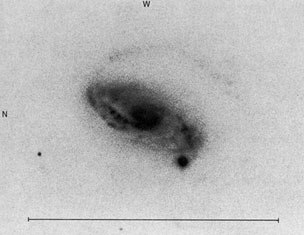
NGC 23 P200-1039-S SbI-II -22m.86 4568 km/s | 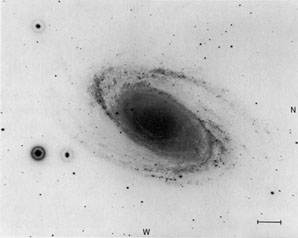
NGC 3031 M81 P200-73-MH Sb(r)I-II -20m.75 -36 km/s | |
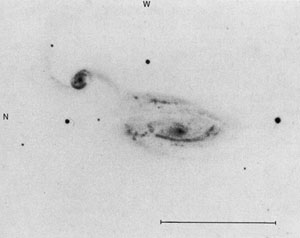
NGC 5394 / 95 W100-2063-H SbII -22m.69 3542 km/s | 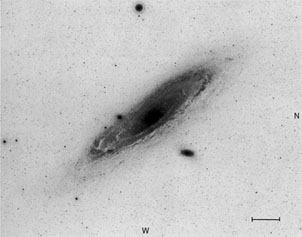
NGC 224 M31 P48-0-Hendricks SbI-II -21m.61L -297 km/s | |
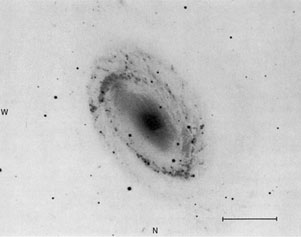
NGC 4725 W100-2156-H Sb/SBb(r)II -22m.47 1213 km/s | 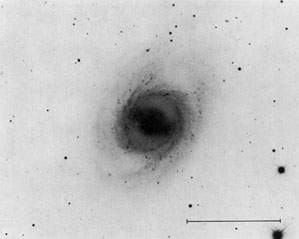
NGC 3351 P200-315-S SBb(r)II -20m.66 779 km/s | 
|